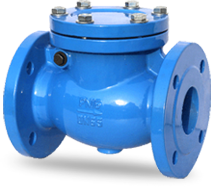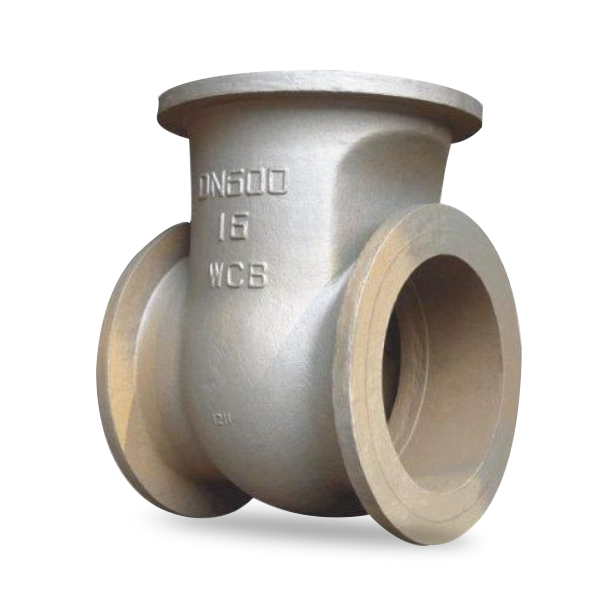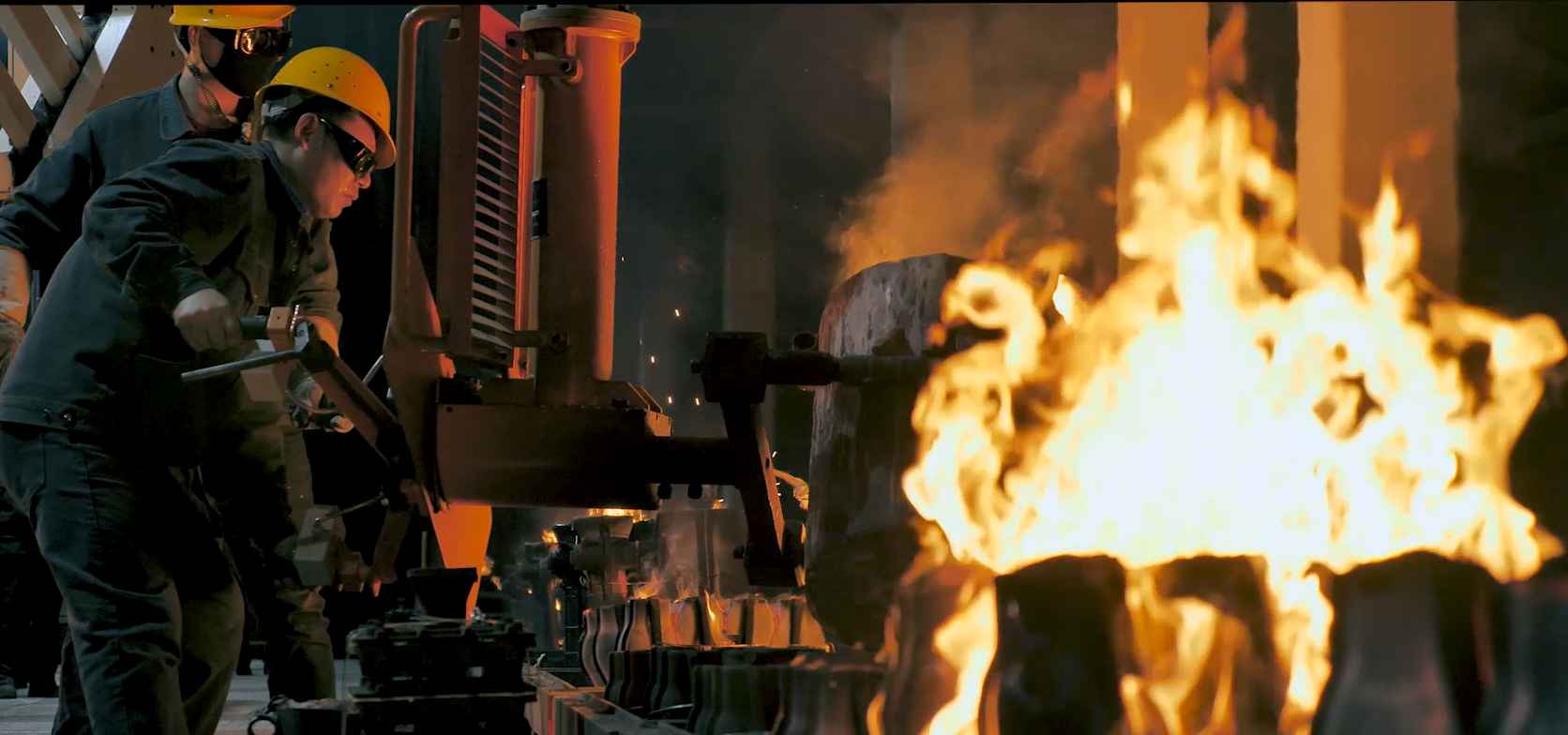ในระบบท่อ วาล์วเป็นอุปกรณ์สำคัญในการควบคุมการไหลของของไหล แรงดัน อุณหภูมิ และพารามิเตอร์สำคัญอื่นๆ การเลือกใช้วัสดุของวาล์วส่งผลโดยตรงต่อเสถียรภาพและอายุการใช้งานของระบบ วัสดุที่ใช้ทำวาล์วทั่วไป ได้แก่ เหล็กหล่อเทาและเหล็กหล่อเหนียว แม้ว่าวัสดุทั้งสองประเภทจะจัดอยู่ในประเภทเหล็กหล่อ แต่ก็มีความแตกต่างกันอย่างมากในด้านประสิทธิภาพ สภาพแวดล้อมที่ใช้งานได้ และพื้นที่การใช้งาน บทความนี้จะแนะนำรายละเอียดเกี่ยวกับความแตกต่าง การใช้งาน และข้อดีข้อเสียของวาล์วเหล็กหล่อเทาและเหล็กหล่อเหนียว
วาล์วเหล็กหล่อสีเทา
วาล์วเหล็กหล่อสีเทา เป็นวัสดุสำหรับวาล์วประเภทหนึ่งที่ใช้กันอย่างแพร่หลาย เหล็กหล่อสีเทาเป็นที่นิยมเนื่องจากมีประสิทธิภาพการหล่อที่ดีและง่ายต่อการกลึง ทำให้เหมาะสำหรับระบบควบคุมของเหลวที่มีแรงดันต่ำและอุณหภูมิแวดล้อม คุณสมบัติหลัก ได้แก่ ประสิทธิภาพการหล่อที่ดี ทนทานต่อการสึกหรอ และทนต่อการกัดกร่อน แต่ค่อนข้างเปราะและไม่เหมาะกับการทนต่อแรงกระแทกที่มากเกินไป
คุณสมบัติหลักของวาล์วเหล็กหล่อสีเทา
- ประสิทธิภาพการหล่อที่ดี:เหล็กหล่อสีเทามีการไหลที่ดี จึงเหมาะกับกระบวนการหล่อที่ซับซ้อน
- ความต้านทานการสึกหรอและการกัดกร่อน:การมีกราไฟท์ในเหล็กหล่อสีเทาช่วยลดการสึกหรอและปรับปรุงความทนทานต่อการกัดกร่อน
- ความเปราะบาง:เนื่องจากโครงสร้างคล้ายเกล็ดของกราไฟต์ เหล็กหล่อสีเทาจึงเปราะและแตกหักได้ง่าย
วาล์วเหล็กหล่อสีเทาเหมาะสำหรับสภาพแวดล้อม
วาล์วเหล็กหล่อสีเทาเหมาะสำหรับสภาพแวดล้อมที่มีแรงดันในการทำงานต่ำ โดยเฉพาะในสาขาต่างๆ เช่น การบำบัดน้ำ การให้ความร้อน การจ่ายน้ำ และการระบายน้ำ เนื่องจากประสิทธิภาพการหล่อที่ยอดเยี่ยม วาล์วเหล็กหล่อสีเทาจึงสามารถใช้ในงานผลิตจำนวนมากและคุ้มต้นทุน
พื้นที่การใช้งานวาล์วเหล็กหล่อสีเทา
- ระบบประปาและระบายน้ำ
- ระบบปรับอากาศและระบายอากาศ
- การประปาส่วนภูมิภาคและบำบัดน้ำเสีย ฯลฯ
วาล์วเหล็กหล่อเหนียว
วาล์วเหล็กหล่อเหนียววาล์วเหล็กหล่อเหนียว หรือที่เรียกว่าวาล์วเหล็กหล่อกลม ผลิตจากวัสดุเหล็กหล่อต่างจากเหล็กหล่อเทา ในเหล็กหล่อเหนียว กราไฟต์จะมีรูปร่างทรงกลม ซึ่งช่วยเพิ่มความเหนียวและความแข็งแรงได้อย่างมาก เมื่อเปรียบเทียบกับเหล็กหล่อเทา เหล็กหล่อเหนียวจะมีความทนทานต่อแรงกระแทก แรงดึง และการกัดกร่อนได้ดีกว่า ทำให้เหมาะสำหรับสภาพแวดล้อมการทำงานที่มีแรงดันและอุณหภูมิสูงกว่า
คุณสมบัติหลักของวาล์วเหล็กหล่อเหนียว
- ความแข็งแกร่งและความเหนียวสูงโครงสร้างกราไฟท์ทรงกลมช่วยเพิ่มความแข็งแกร่งและความเหนียวของเหล็กหล่อเหนียว
- ทนทานต่อแรงกระแทกได้ดี:เนื่องจากกราไฟท์มีลักษณะทรงกลม เหล็กหล่อเหนียวจึงทนทานต่อแรงกระแทกได้ดีกว่าเหล็กหล่อสีเทา
- ทนทานต่อการกัดกร่อนอย่างแข็งแกร่ง:เหล็กหล่อเหนียวมีความทนทานต่อการกัดกร่อนได้ดีกว่าเหล็กหล่อสีเทา ทำให้สามารถทนต่อสภาวะแวดล้อมที่รุนแรงได้
วาล์วเหล็กหล่อเหนียวเหมาะสำหรับสภาพแวดล้อม
วาล์วเหล็กหล่อเหนียวใช้กันอย่างแพร่หลายในสภาพแวดล้อมการทำงานที่มีแรงดันสูง อุณหภูมิสูง และกัดกร่อนสูง โดยทั่วไปจะพบวาล์วเหล่านี้ในระบบท่อสำหรับอุตสาหกรรมต่างๆ เช่น ปิโตรเลียม เคมี ก๊าซธรรมชาติ และพลังงาน รวมถึงในระบบบำบัดน้ำและน้ำเสียที่มีความต้องการสูง
พื้นที่การใช้งานวาล์วเหล็กหล่อเหนียว
- ระบบส่งน้ำมันและก๊าซธรรมชาติ
- ท่อส่งแรงดันสูงของอุตสาหกรรมเคมี โลหะ และพลังงาน
- ท่อส่งไอน้ำอุณหภูมิสูง
- ระบบบำบัดน้ำและบำบัดน้ำเสีย
บทสรุป
ทั้งคู่ วาล์วเหล็กหล่อสีเทาและวาล์วเหล็กหล่อเหนียว วาล์วเหล็กหล่อสีเทามีข้อได้เปรียบเฉพาะตัวและเหมาะกับสภาพแวดล้อม วาล์วเหล็กหล่อสีเทามีประสิทธิภาพการหล่อที่ยอดเยี่ยมและต้นทุนต่ำ จึงเหมาะอย่างยิ่งสำหรับสภาพแวดล้อมที่มีแรงดันต่ำและอุณหภูมิแวดล้อมในระบบบำบัดน้ำและระบบระบายน้ำ ในทางกลับกัน วาล์วเหล็กหล่อเหนียวมีความแข็งแรง ความเหนียว และทนต่อการกัดกร่อนสูงกว่า จึงเหมาะสำหรับสภาพแวดล้อมที่มีแรงดันสูง อุณหภูมิสูง หรือกัดกร่อน และมักใช้ในอุตสาหกรรมปิโตรเลียม ก๊าซธรรมชาติ เคมีภัณฑ์ และอุตสาหกรรมอื่นๆ การเลือกวัสดุของวาล์วที่เหมาะสมจะช่วยให้ระบบท่อทำงานได้อย่างปลอดภัยและยืดอายุการใช้งาน









